External links
 This article incorporates text from a publication now in the public domain : Singer, Isidore; et al., eds. (1901–1906). "Gustav Jacob Born". The Jewish Encyclopedia . New York: Funk & Wagnalls.
This article incorporates text from a publication now in the public domain : Singer, Isidore; et al., eds. (1901–1906). "Gustav Jacob Born". The Jewish Encyclopedia . New York: Funk & Wagnalls.- Gustav V R Born in Spiked Online
Gustav Jacob Born (1851–1900) was a German histologist and author. He was the father of Max Born.
Born was a native of Kempen (Kępno), Province of Posen. He received his education first at the gymnasium of Görlitz, Prussian Silesia, where his father practised as a physician and held the position of Kreisphysicus (district physician), and afterward at the universities of Breslau, Bonn, Straßburg, and Berlin, graduating as physician from Breslau in 1876. In the same year he was appointed assistant prosector and Privatdozent at the University of Breslau, and in 1877 prosector. In 1886, he was elected assistant professor, and in 1898 professor of histology and comparative anatomy, at the same university, receiving the Prussian Order of the Red Eagle of the fourth class in the latter year.
Born was married twice. His wife Gretchen Kauffmann gave birth to Max (b. 11 December 1882) and a daughter Käthe (b. 5 March 1884), but she died on 29 August 1886. Gustav married a second time (m. 13 September 1891); his second wife, Bertha Lipstein, gave birth to another son, Wolfgang (b. 21 October 1892).
Several technical inventions, as well as new methods in the field of microscopy and embryology, made Born's name prominent in his lifetime. Among these was a method for reproducing and plastically enlarging small anatomical and embryological objects, which was described in Zeitschrift für Wissenschaftliche Mikroscopie, vol. v.
Gustav Jacob Born was a great-grandfather of Australian singer and actress Olivia Newton-John.

Friedrich Gustav Jakob Henle was a German physician, pathologist, and anatomist. He is credited with the discovery of the loop of Henle in the kidney. His essay, "On Miasma and Contagia," was an early argument for the germ theory of disease. He was an important figure in the development of modern medicine.

Friedrich August Johannes Loeffler was a German bacteriologist at the University of Greifswald.

Max Johann Sigismund Schultze was a German microscopic anatomist noted for his work on cell theory.
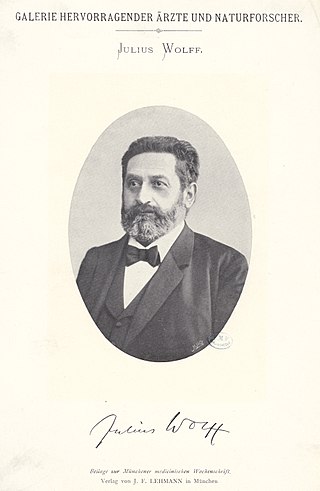
Julius Wolff was a German surgeon.
August David Krohn (1803–1891) was a Saint Petersburg born zoologist of German origin. He was the son of Abraham Krohn, the founder of Russia's first brewery, who had left the island of Rügen to serve in the court of Catherine the Great. He was the uncle of the fennoman folklorist Julius Krohn. According to legend, Krohn is said to have left for Central Europe after losing to his younger brother Leopold the competition for the hand of a Vyborg mansion owner's 15-year-old daughter. He remained unmarried until his death at the age of 88.
Jacob Freudenthal was a German philosopher. He was born at Bodenfelde, Kingdom of Hanover and died at Schreiberhau.
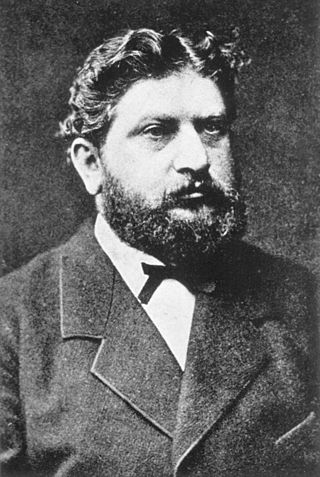
Julius Friedrich Cohnheim was a German-Jewish pathologist.

Karl Bogislaus Reichert was a German anatomist, embryologist and histologist.

Gustav Albert Schwalbe, M.D. was a German anatomist and anthropologist from Quedlinburg.

Albert Fraenkel was a German physician.
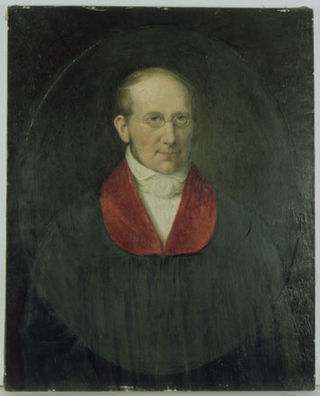
Hermann Friedrich Stannius was a German anatomist, physiologist and entomologist. He specialised in the insect order Diptera especially the family Dolichopodidae.
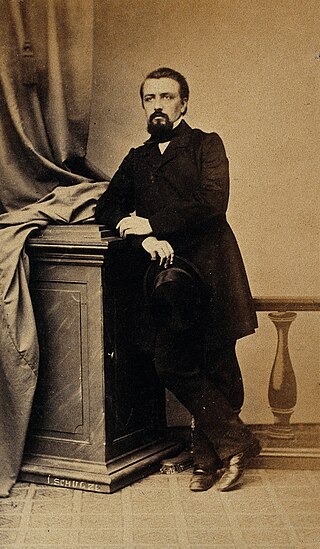
Nikolaus Friedreich was a German pathologist and neurologist, and a third generation physician in the Friedreich family. His father was psychiatrist Johann Baptist Friedreich (1796–1862), and his grandfather was pathologist Nicolaus Anton Friedreich (1761–1836), who is remembered for his early description of idiopathic facial paralysis, which would later be known as Bell's palsy.

Gabriel Gustav Valentin, also Gabriel Valentin, was a German physiologist and professor of physiology at the University of Bern.
Johannes Adolf von Kries was a German physiological psychologist who formulated the modern “duplicity” or “duplexity” theory of vision mediated by rod cells at low light levels and three types of cone cells at higher light levels. He made important contributions in the field of haemodynamics. In addition, von Kries was a significant theorist of the foundations of probability.

Friedrich Julius Rosenbach, also known as Anton Julius Friedrich Rosenbach, was a German physician and microbiologist. He is credited for differentiating Staphylococcus aureus and Staphylococcus albus, which is now called Staphylococcus epidermidis, in 1884. He also described and named Streptococcus pyogenes. Rosenbach's disease is also named in his honor.
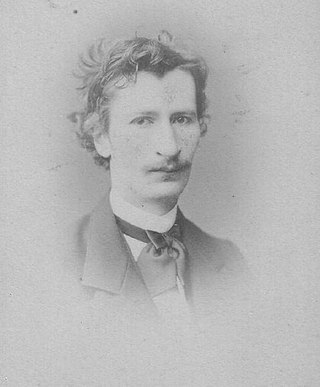
Hans Paul Bernhard Gierke was a German anatomist who was a native of Stettin.
Otfrid Mittmann was a German mathematician. Starting in 1927, he studied mathematics and natural sciences in Göttingen and Leipzig, and got his Ph.D. in Apr 1935. He joined the Nazi movement in Oct 1929. and published on statistical aspects of Nazi eugenics. After the war, he published in Göttingen and Bonn.
Olga Vassilievna Leonova, later Leonowa-von Lange, born 1851 or 1859, was a physician and embryologist known for her studies of neuroembryology and congenital disorders, specifically those affecting the brain, spinal cord, eyes and limbs.
Maximilian Christian Gustav Carl Braun was a German anatomist and zoologist who specialized in the field of parasitology.
Erich Lindemann was a German phycologist and taxonomist.